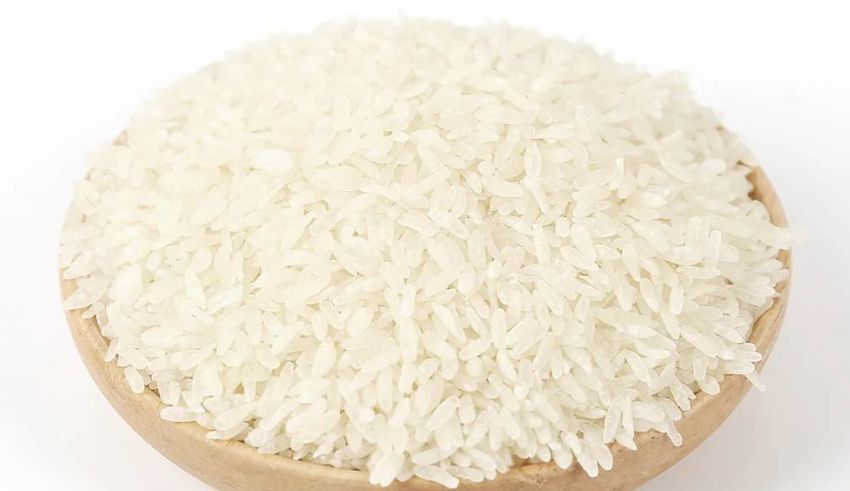
As health and wellness trends evolve, Shirataki rice has grown in popularity as a substitute for people attempting to control calories, cut carbohydrates, and improve digestive health. Often praised for its weight control and blood sugar benefits, this odd rice substitute boasts a spectrum of nutritional content suited for various types of diets, from ketogenic to gluten-free. We will closely review shirataki rice in this essay covering its background, benefits, cooking methods, and likely role in a balanced, nutrient-dense diet.
Derived from the konjac plant, sometimes known as Amorphophallus konjac, devil’s tongue, or konnyaku potato, shirataki rice has been cultivated for millennia in Asia; this plant is especially well-known in Japanese cuisine, where “shirataki,” which means “white waterfall,” references the translucent, flowing look of its rice and noodle forms. Rich in glucomannan, a unique sort of soluble fiber that absorbs a lot of water and stretches the digestive tract, the konjac root makes one feel full. Usually kept fresh by water packing, processed from this fiber, Shirataki rice is
Since it almost lacks calories or digestible carbohydrates unlike traditional rice, Shirataki rice is a staple for those on low-calorie or low-carb diets. Among patients with diabetes or insulin resistance, its modest impact on blood sugar levels also makes it popular.
Shirataki Rice Exceptional Low in Calorie Count: Nutritional Value
One of the main reasons shirataki rice is becoming more and more interesting is its relatively low calorie count. A standard portion of shirataki rice just comprises 10 to 15 calories per 100 grams, compared to the 130–150 calories in a comparable amount of cooked white rice. This ultra-low calorie count helps consumers enjoy delicious, filling portions free from the caloric effect related with other grains for those aiming to keep a calorie deficit for weight reduction or weight maintenance.
Nearly Carb-free
Unlike most traditional grains, Shirataki rice has practically no digestible carbohydrates. For those on low-carb or ketogenic diets—who occasionally have to limit their carbohydrate intake to promote fat burning—it provides a great replacement. Having almost zero net carbohydrates, shirataki rice offers a flexible, rice-like substitute that will easily fit meals where grains are often used without exacerbating ketosis or blood sugar increases.
High in fibrous power: glucomannan
The main fiber in shirataki rice is glucomannan, a kind of soluble fiber especially suited to absorb water and expand in the digestive tract. This trait helps one feel full and satiable, so reducing the likelihood of overindulging in meals or snacks between others. Furthermore proven to support excellent digestion, bowel regularity, and even feed favorable gut bacteria—which can help general gut health—glucomannan has also been shown to support As a high-fiber food, shirataki rice may also help to balance blood sugar levels and, by reducing LDL cholesterol, may improve heart health.
Certainly Gluten-Free
Naturally gluten-free, Shirataki rice is suitable for anyone simply avoiding gluten for personal reasons as well as those with celiac disease or gluten sensitivity. Unlike some gluten-free grains, which demand specific processing or additives to remove gluten, Shirataki rice is a simpler, unprocessed option for diets. Its versatility in recipes—from soups and salads to stir-fries—also makes it a helpful addition to a gluten-free diet, where variety can occasionally be limited.
Health Benefits of Shirataki Rice Support Objectives for Control of Weight
Because of its low calorie and high fiber count, Shirataki rice is occasionally recommended for weight control. As water is absorbed, the glucomannan fiber slows down digestion in the stomach, therefore extending fullness. This satiety effect helps avoid overconsumption and lets people more easily maintain their calorie goals. Studies on glucomannan show that this fiber can reduce appetite, so supporting long-term weight control or helping in weight loss.
Considered a prebiotic, the soluble fiber in shirataki rice nourishes healthy gut flora. These bacteria are vitally vital for gut health, immune system functioning, even mental well-being. Shirataki rice is part of a balanced diet that helps to preserve a strong gut flora, thereby enhancing general digestion and possibly avoiding issues including constipation. Moreover, glucomannan fiber gives stool more weight, which motivates frequent bowel motions and makes shirataki rice a perfect choice for people wanting to improve their digestive regularity.
Blood Sugar Stability for Low-Carbs Dieters and Diabetics
Often a go-to for people regulating blood sugar levels, shirataki rice contains low carbs and does not cause the increases in blood glucose observed with ordinary rice and other grains. Shirataki rice replaces high-carb foods for those on diabetic or low-glycemic diets so they may enjoy rice-like tastes and textures free from the glucose spike. Its high fiber count helps to further slow down sugar absorption into the bloodstream, therefore encouraging regular blood sugar levels and a constant energy release.
Possible Effects on Cardiovascular Condition
Some research suggests that glucomannan fiber could help reduce LDL (“bad”) cholesterol, therefore enhancing cardiovascular health. The fiber in shirataki rice aids the body to eject rather than absorb by attaching to cholesterol molecules in the digestive tract. For anyone attempting to lower their cholesterol, Shirataki rice is an excellent, low-calorie, high-fiber supplement to a heart-conscious diet.
Important Considerations Made Using Shirataki Rice
Though shirataki rice has different nutritional value, it does not contain the micronutrients present in whole grains including B vitamins, iron, and magnesium. One must consequently combine shirataki rice with a variety of nutrient-dense foods if one maintains a balanced diet. Whole grains, fruits, vegetables, and lean proteins should go with Shirataki rice to ensure enough intake of important vitamins and minerals.
Some people may also have some stomach problems with gas or bloating when first incorporating glucomannan fiber into their diets. Starting small doses and raising gradually gives the digestive system time to adjust, thereby helping one avoid this.
- Usually presented in water-filled sachets to maintain freshness, the konjac root gives Shirataki rice a faintly fishy fragrance. This is how to do it:
- Empty the liquid first, then gently rinse the rice under cold water. This is the stage where any last scents should be eliminated.
- Rinish, then soak the rice for one to two minutes under hot water. This considerably improves the texture and helps to remove any residual scents.
- Dry the rice with a paper towel then sauté it momentarily in a skillet free of oil to have better consistency. This penultimate stage gives a more rice-like texture and helps it absorb flavors in the meal.
- From soups and salads to stir-fries and curries, Shirataki rice may be used practically exactly in lieu of conventional grains in many meals.
The Diet-Friendly Future: Shirataki Rice
For those attempting to control blood sugar, weight, or simply vary their meals, Shirataki rice could be a wonderful supplement to a diversified eating plan. It provides a unique low-calorie, high-fiber replacement with significant health benefits even though it does not replace nutrient-dense cereals. Rising star in the wellness market, shirataki rice’s flexibility, health benefits, and fit for numerous dietary restrictions serve to define future health-conscious eating.
























